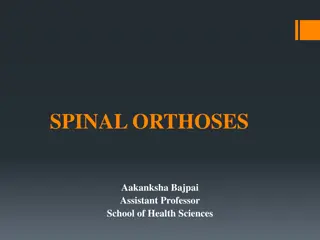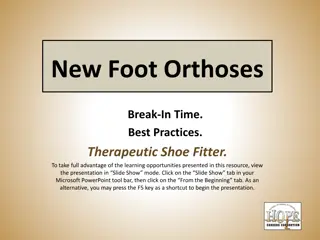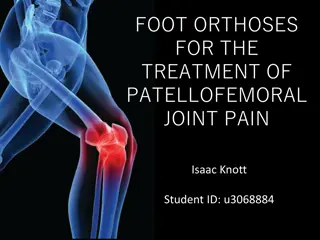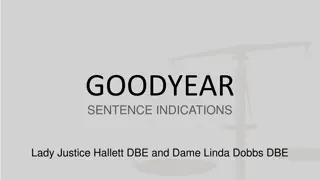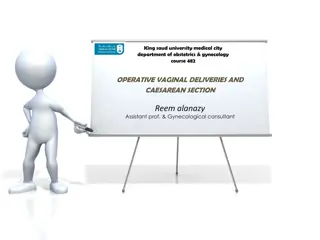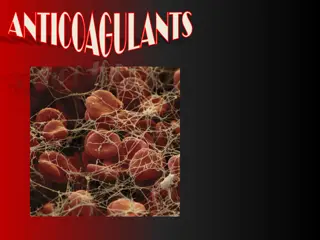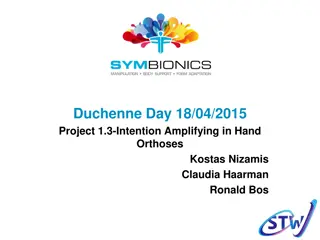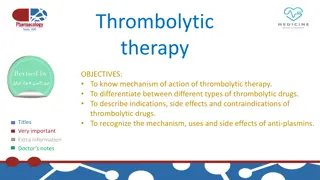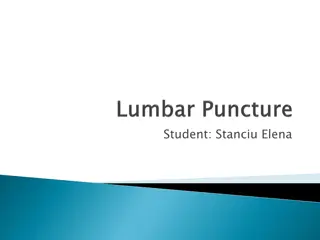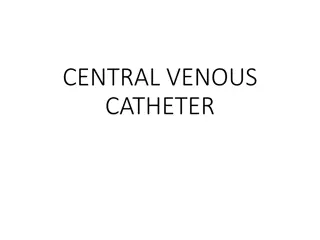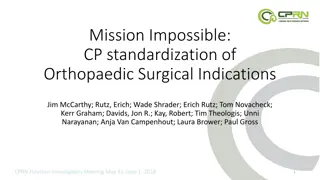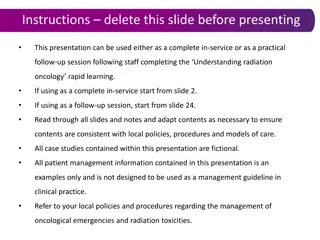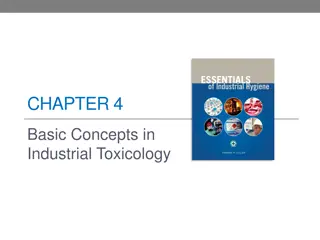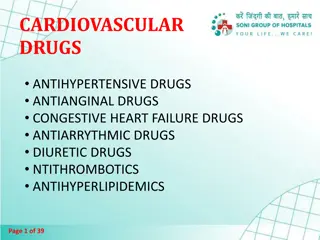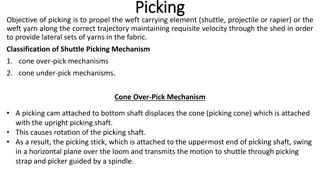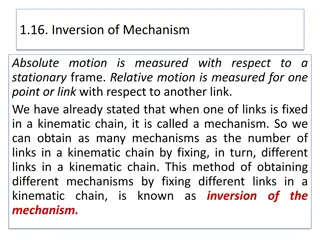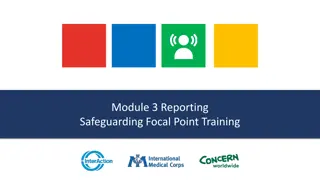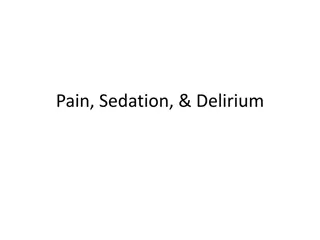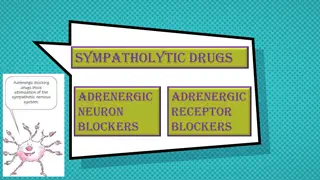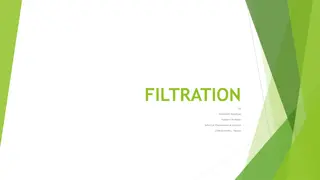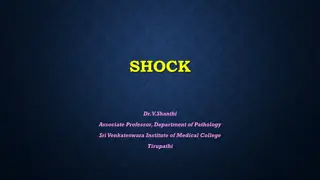Understanding Orthoses: Types, Indications, Mechanisms, and Effects
Orthoses are mechanical devices used to support, stabilize, and protect various body parts. They can be categorized into different types such as cervical, cervicothoracic, thoracolumbosacral, lumbosacral, and sacroiliac orthoses. Indications for spinal orthotics include stabilizing the spine after a fracture, limiting movement in cases of pain, supporting posture after paralysis, and postsurgical stabilization. These devices work by controlling movement, providing trunk support, and maintaining spinal alignment. However, they may also have negative effects such as weakness, atrophy, skin irritation, impaired ambulation, and psychological dependence. Specific types like soft cervical collars offer advantages like warmth and psychological reassurance but may lack structural support.
Download Presentation

Please find below an Image/Link to download the presentation.
The content on the website is provided AS IS for your information and personal use only. It may not be sold, licensed, or shared on other websites without obtaining consent from the author. Download presentation by click this link. If you encounter any issues during the download, it is possible that the publisher has removed the file from their server.
E N D
Presentation Transcript
By : Abdullah Radwan
An orthosis is a mechanical device which applies forces to the body in an effort to: support, limit, and stabilize moving parts, assist and improve motion, correct and align deformities, and prevent and protect susceptible areas. 1. 2. 3. 4.
Indications for Spinal Orthotics Stabilize spine after fracture. Limit spinal movement in cases of pain or sprain. Support posture and prevent deformity after paralysis. Postsurgical stabilization (with or without fracture). 1. 2. 3. 4.
MECHANISM OF ACTION The physiologic mechanisms responsible for this protection are: Control of movement, Trunk support, and Spinal alignment. 1. 2. 3.
Categories of Orthoses Cervical (CO): soft or rigid head cervical (Philadelphia, Aspen, Miami, Newport) Cervicothoracic (CTO): Halo, SOMI, Minerva Thoracolumbosacral (TLSO): custom-molded body jacket, CASH, Jewitt, Lumbosacral (LSO): chairback, Knight, corsets/binders Sacroiliac (SO): trochanteric belt, sacral belt, sacral corset. 1. 2. 3. 4. 5.
Negative effects of bracing: Weakness, atrophy, and contracture. Skin irritation . Impaired ambulation and balance . Eating and swallowing problems due to the position of the head and neck. Pulmonary capacity may be decreased . Psychological dependence on the brace . 1. 2. 3. 4. 5. 6.
CERVICAL ORTHOSES Cervical bracing can be subdivided into two broad categories: 1. Cervical devices encircle the cervical spine 2. Cervico-thoracic braces extend into the thoracic spine.
A) Soft Cervical Collars Advantages: provide warmth, psychological reassurance, and kinesthetic reminders to limit cervical range of motion; 1. 2. 3. Disadvantage: Cannot provide structural support.
Indications: Treatment of mild muscular spasms associated with arthritic changes. Treatment of mild soft-tissue injuries. Early management of whiplash injuries. 1. 2. 3.
B) Hard Cervical Collars Indications: Pre-hospital trauma immobilization 1. 2. For long-term patient management in an ambulatory setting. Examples: Philadelphia Cervical Collar: The Miami J, Newport, and Aspen collars:
Philadelphia Cervical Collar: It may be used for long-term patient management. Anteriorly, it extends from the mandible to the sternum and posteriorly it extends from the occiput to the upper thoracic spine.
The Miami J, Newport, and Aspen collars: Each of these collars has an anterior opening to accommodate a cricothyrotomy/tracheostomy. The Miami J Aspen collars
Indications of rigid cervical collars: Mid-cervical bony or ligamentous injuries. Postoperative stabilization or post-halo removal. Contraindication: Spinal instability. Advantages: 1. Cost-effective, 2. Easily applied, and 3. Do not have the increased risks associated with the use of the halo. Disadvantages: 1. Pressure ulcer formation, 2. Marginal mandibular nerve palsy, 3. Dysphagia, 4. Changes in intracranial pressure, 5. Reduction in tidal volume, and 6. Tetraparesis.
Cervicothoracic Orthosis Ordered to restrict middle and lower cervical movement. They include the SOMI and Minerva. The SOMI (sternum, occiput, mandible, immobilizer).
The Minerva: It is a total contact orthosis with fixation points at the chin, occiput, sternum and thorax, and a forehead strap.
Halo brace: The halo cervicothoracicorthosis provides triplanarcervical vertebral motion control. Indications: 1. Postoperatively as an adjunct to internal fixation, as well as The primary method for fracture stabilization. 2. Advantages: 1. It provides immediate cervical spinal stability in patients suffering from acute fracture or subluxation; It is a nonsurgical alternative for patients refusing operative care or for whom surgical intervention is contraindicated; and It allows early mobilization without risk of compromising spinal alignment. 2. 3.
Complications Associated with Halo Vest Use: Loss of spinal reduction while wearing a halo Failure to develop spinal stability after the wearing the halo Pressure sore development Pin loosening Pin site pain Pin tract infection Brain abscess Local osteoporosis Acute equilibrium impairments Forehead scarring Dysphasia Pin penetration of the skull Halo ring migration Cranial nerve palsy Brachial plexopathy
THORACOLUMBOSACRAL ORTHOSES(TLSO): All trunk orthoses produce their desired effect by applying anterior abdominal compression, restricting intervertebral motion, or supporting the spine. All TLSOs have been shown to be more effective in reducing motion at the upper levels than at the lower levels, with greatest motion at the lumbosacral joints. The TLSOs can be divided into categories based on the direction of motion they control: Flexion control, flexion-extension control, flexion-extension-lateral control, and flexion-extension-lateral-rotary control orthoses.
Flexion Control Orthosis (anterior hyperextension brace): It functions to extend the thoracolumbar region. Examples are: The Jewett and Cruciform anterior spinal hyperextension (CASH) braces. Both use a three-point pressure system without any abdominal compression. 1. 2.
The Jewett brace: It consists of a metal anterior and lateral frame. Attached to the frame are two lateral pads, a sternal pad, a suprapubicpad, and a posterior thoracolumbar pad.
The CASH orthosis: It consists only of an anterior metal frame that is shaped like a cross with the pads attached at the ends. The horizontal bar is attached at the midpoint. It is easier to don and doff than the Jewett and is better tolerated. Both Jewett and CASH orthoses are designed to prevent flexion only and do not limit lateral and rotary movements.
Disadvantages: Not decrease kyphosisand may cause excessive hyperextension forces on the posterior elements, inducing fracture. Contraindication: In unstable fractures or In cases where extension must be prohibited, such as spondylolisthesis.
Flexion-Extension Control Orthosis The Taylor brace: Consists of two thoracolumbosacral posterior uprights attached inferiorly to a pelvic band and superiorly to an interscapular band that also serves as an attachment for axillary straps. Anteriorly, there is a corset for abdominal compression. This brace limits trunk extension primarily in the mid-to-lower thoracic and upper lumbar areas .
Flexion-Extension-Lateral Control Orthosis The Knight-Taylor brace: Is a combination of the Knight and the Taylor brace. It adds a pair of lateral uprights to the design in an attempt to limit lateral trunk motion.
Flexion-Extension-Lateral- Rotary Control Orthosis: Called the cowhornorthosis It similar to the Knight-Taylor except that the interscapular band is extended anteriorlyand superiorly and subclavicular pads are added. It has the added benefit of limiting trunk rotation and flexion in the thoracic and upper lumbar spine;
Plastic Body Jacket The custom-molded plastic body jacket is the orthotic apparatus of choice when maximum immobilization is necessary. Body jackets provide total contact to soft tissues and reliefs over bony prominences, thereby distributing forces over a large area for greater comfort, support, and motion control.
LUMBOSACRAL ORTHOSES (LSO): Either flexible or rigid. A) The flexible LSOs : -( The lumbar/abdominal binder- The lumbosacral corset) Refer to corsets, belts and binders. While not effective in restricting motion to a significant degree, they can elevate intraabdominal pressure, thereby supporting structures, as well as provide inhibitory kinesthetic feedback and warmth. When treating low back pain, flexible LSOs are the most prescribed spinal orthoses.
Advantages: Pain relief, 1. 2. Provides postural, vasomotor, and respiratory support in cases of paralysis. 3. In respiratory insufficiency, it places the diaphragm in a superior position and can assist the patient with increased diaphragmatic expansion. Disadvantages: Continued use will result in weakness and atrophy of trunk muscles. An exercise program needs to be given to the patient concomitantly. 1. 2.
B) The rigid LSOs: Categorized by the motion they control: Flexion-extension, Flexion-extension-lateral and Extension-lateral. 1. 2. 3.
Flexion-Extension Control Orthosis The chairback brace: a rigid LSO that consists of two posterior uprights attached to a pelvic band inferiorly and a thoracic band superiorly with an abdominal support fastened to the posterior uprights with straps. Its forces serve to restrict flexion and extension as well as provide abdominal compression when the abdominal support is tight.
Flexion-Extension-Lateral Control Orthosis The Knight brace: Further limits motion with lateral uprights added to the chairback brace. The lateral bars pass over the iliac crests so they must be fitted carefully to avoid pressure on these bony prominences.
Extension-Lateral Control Orthosis The Williams orthosis: Limits extension and lateral motion but encourages flexion. Its effect is to reduce the lumbar lordosis. It consists of pelvic and thoracic bands joined by a pair of lateral uprights (no posterior uprights), which decreases the lateral motion.
SACROILIAC ORTHOSES include: Trochanteric belts, Sacral belts, and Sacral corsets. They are prefabricated devices that wrap around the pelvis between the iliac crests and greater trochanters. Indications: Stabilize the sacroiliac joint, Support pelvic fractures and traumatic sacroiliac joint separations, Decrease sacroiliac joint and postpartum pain 1. 2. 3. 1. 2. 3.


